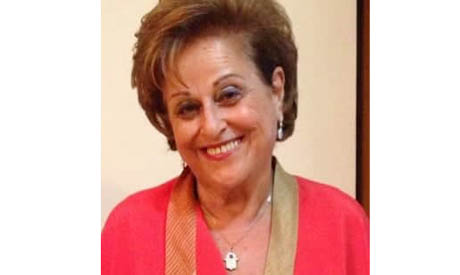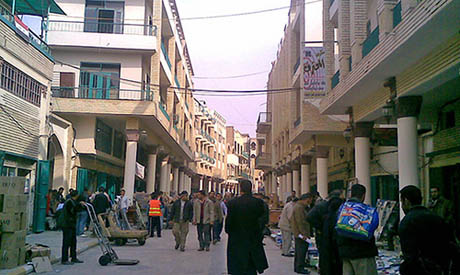"My stories flew off like butterflies that have been imprisoned in a locked room." - Maysoon Melek
This epigraph sums up not only the state of the first-person narrator as she wakes up from an anaesthetic in the hospital and starts making up fantastic stories where the Tigris and the Euphrates meet the Nile, but also it signifies the trajectory of the author, Maysoon Melek, who after years of accomplished professional life as an Iraqi economist and a globe-trotting United Nations official let go of her creative imagination in this exquisite collection of short stories — her first literary work to see the light after being locked in her notebooks for so long. In the above-mentioned fictional episode, the sister of the narrator visiting her in the hospital questions such nonsense and points to the groggy patient that the Mesopotamian rivers cannot possibly merge with the Nile as they are in different continents. But the geography that the narrator upholds is that of a symbolic order. It is how, she with her Iraqi roots watered by the two rivers has merged with Egypt — what Herodotus called “the gift of the Nile”. Yes, the narrator is hallucinating, but within such hallucinations the bonds between Iraq and Egypt are detected in the identity of the narrator.
I have always wondered what turns a narrative discourse into literature? What makes this collection, The Coffer and Other Stories, Al-Sanduq wa-Qissas Ukhra (Dar Al-Shorouk, 2019), so remarkable? One simple answer to this perennial question might be the following: Literature is what we desire to read not once, but to read again and again. It is more difficult to explain why we want to reread what we have already read and recall the plot, the setting, the characters, and the finale. We do not reread detective stories because we already know from first reading who the murderer is, but we read and reread canonical works because they are so rich that we discover a different layer of meaning every time we reread them.
The prose of Melek is intriguing: when she refers to flora — whether it is a blossoming cactus or a fragrant jasmine or a rosa damascena, Melek is able to create a coded language of flowers, just as she is able to weave into her work the motif of music — Classical and Popular. The zither musical composition in the story “It Is Rabab” by the Iranian doctor is inspired by Rabab, the Iraqi woman. This piece sums up the bonding between two sensitive individuals not withstanding their eight-year warring nations. Mozart’s piano concerto no 21 is evoked when the woman protagonist in the short story “Che Guevara, Mozart, and the Earthquake” is scolded by her boss for her honest reporting. She leaves in anger driving her car in the congested traffic of Cairo while listening to a recording of Mozart’s concerto and reminding herself how he dismissed his anger by playing the piano as if he were flying a kite.
It is thus not only the music that is calming but also the example of someone who can move on despite his anger. Anxiety catches up with the driving protagonist when she is caught in the earthquake where people were leaving their apartment for open streets. The author captures here the scene of an unexpected earthquake that took place in Cairo in the early 1990s. As the protagonist rushes to her home, she finds her mother with her daughters sitting calmly drinking tea. Her mother who has come from Baghdad is not shaken at all as she says she has been hit by American “earthquakes” for 40 days, and thus cannot be shaken by a minor trembling of the earth. Her mother is engaged in telling stories to her granddaughters, indifferent to a passing quake. The protagonist then recalls Mozart transcending his anger. She finds solace in the Arabic saying “anger is blind”, giving us the indirect lesson of keeping “cool” even when confronted with maddening situations, natural or professional.
Popular Arabic music and singers — Um Kolthoum, Fayrouz, Salima Murad, etc — constitute a leitmotif in the collection and so do poets from Ibn Arabi, Al-Hallaj, Al-Mutanabbi, Saadi Shirazi, Hafez of Shiraz, to Mahmoud Darwish, Muzaffar Al-Nawwab, Amal Dunqul, Nazim Hikmet, and Al-Jawahiri. Apart from the organic inclusion of these figures in the stories, the collection offers us a cultural and artistic richness that expands our horizons and invites us into finding kinship between varied writers and artists.

Melek
The principal short story “The Coffer”, from which the collection gets its title, is rather a short novella running to more than 50 pages, divided into 16 sections. It dissects the relations of Aisha, the grandmother with the Coffer in which she hides her writing and secrets. Having lost her daughter, Aisha brings up her granddaughter Somaya, culminating in her marriage to Hazim, who ends up enlisted in the Iraq-Iran war of 1980-1988. It is only after the death of the grandmother and the opening of the Coffer that Somaya learns about the unrequited love of her grandmother to her cousin. Intimate relations between Somaya and Hazim including the disturbing shadow of war leave them anxious and unmake their conjugal harmony. The relations between Aisha and her neighbours of different religions and classes are beautifully explored as the story unfolds.
Melek incorporates historical moments in her narratives while weaving fictional and drama around them. Rabab Abdel-Mahdi, for example, in the first story in the collection perishes along with her aunt in an explosion of a booby-trapped car in 2017 that actually took place. Like so many stories in this collection, love and death seem to be interfaced. Rabab, the Iraqi school teacher who lives in Jordan and comes to Baghdad to visit her uncle falls in love with an Iranian medical doctor, Pagemen Amir Agha, who resides in London and who has come to Baghdad seeking traditional manuscripts related to his interest in music.
Just when their blissful union is about to take place, Rabab’s tragic death ruptures the finale. In her funeral, Pagemen, plays a composition dedicated to her in a series entitled “Variations on a Time Out of Time”. This love-death juxtaposition is also in the moving story entitled “Love Has Many Faces”, in which the affection the protagonist has for her terminally-ill brother is expressed in music and singing while he is hospitalised. This joie de vivre astounds the nurse as the family knows that the patient has only a few days to live. The sick brother who has been away languishing in Iraq comes out at last to join his sisters and nieces only to find that his time is about to expire. The song they sing together is one they memorized and sang together in their youth, that of Joan Baez’s “We Shall Overcome”—an American Civil Rights song of the 1960s. The protagonist explains to the nurse that “for us, music is a medicine”.
Through these short and long stories of Melek, we are introduced to the different faces of Baghdad. Baghdad that has been damaged to the point of erasure, Baghdad with its glorious sunsets and palm groves, Baghdad of the Booksellers in Al-Mutanabbi Street and Baghdad of rundown offices — a protean city with a thousand faces. Many of the protagonists of the collection, like the author, are displaced Iraqis. No wonder, they raise issues about migration and refugees. In one of the stories, the four-year old Bani is compared with his big head and small body to Hanzala, the Palestinian child drawn by the cartoonist Naji Al-Ali who has become the icon of resistance. Like Hanzala, Bani is stubborn and when his parents migrate to Canada, he refuses to sing the national anthem at school, saying that his is Biladi, Biladi (the Egyptian national anthem) which he used to sing in school trips in Egypt. The question of hybrid identity, clinging to roots, refugees versus migrants, are all touched upon in a subtle way in these narratives where the psychology and trauma of displacement are lyrically depicted.
One cannot escape a certain womanist sensibility in these stories. In “Nightmare and Vision”, the intimate thoughts of a woman about her foetus, moment of giving birth, joys of lactation, and anxieties of abortion are spelled out in the form of interior monologues and nightmarish dreams. In the two stories, “One of the Penultimate Poems” and “Two Scenes of a Dangerous Liaison”, we encounter an everyday dinner and an everyday conversation seen from the point of view of a woman, and yet the scenes are by no means ordinary; they take the aura of existential longings that are never defined. In other stories, the ritual of wedding and the role of women in preparing the culinary feast, funerals and the lamentation and wailing of household women, the story-telling of mothers and grandmothers to their children — all are described with such minute details that an anthropologist can cull the customs of professional middle class Iraqis based on them. The misery of Afghani children in refugee camps, the bureaucracy of UN peace keeping organisations, the colonial outlook and race issues that persist in our world are alluded to in several stories; they are reminders of the rampant misery that marks our world.
Above all, Melek in her collection and despite the barbarian world we live in, gives us moments of humanity overcoming violence and wars; it gives us the warmth of human passions and bonding. The last verse line of Mahmoud Darwish’s poem in the collection’s epigraph sums it up: “We are here and surviving… and the dream has a sequel.”

Al-Mutanabbi Street
There will be a celebration of Melek’s collection in Diwan Bookshop (Zamalek, Cairo) on 18 January at 7pm where the author will be reading excerpts from her book and two prominent literary critics, Etidal Osman and Sayed Dayfallah, will introduce the collection and comment on it.
Short link: